This was published 6 years ago
Ruaha national park, Tanzania: Africa's newest safari frontier
By Sue Williams
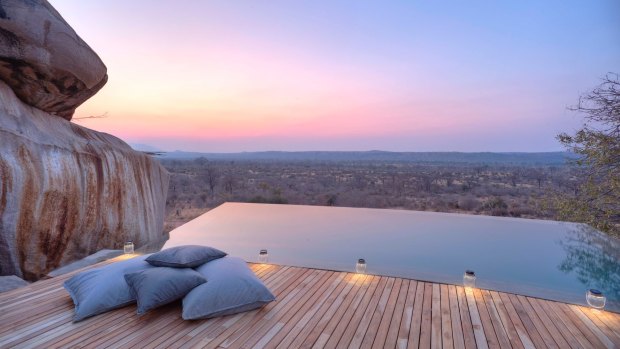
Jabali Dusk Infinity Pool.
The woman next to me leaps to her feet. "Oh my God!" she yells. "Look!"
The Landcruiser crunches to a sudden halt and, heart pounding, I turn in the direction she's pointing. I expect to see a leopard climbing a tree in pursuit of a baboon, an elephant bathing its baby or at least a lion lying flat in the high grasses, stalking an unwary impala lamb. But there's nothing.
"No, up there!" she urges, gesturing to a nearby tree. "It's a Merops persicus!" I look around blankly. "A blue-cheeked bee-eater," she says impatiently. "What an incredible sight!" Right. It's a bird. A pretty green bird with a pale blue forehead and a yellow throat, but a mere bird nonetheless. I come down to earth with a jolt.
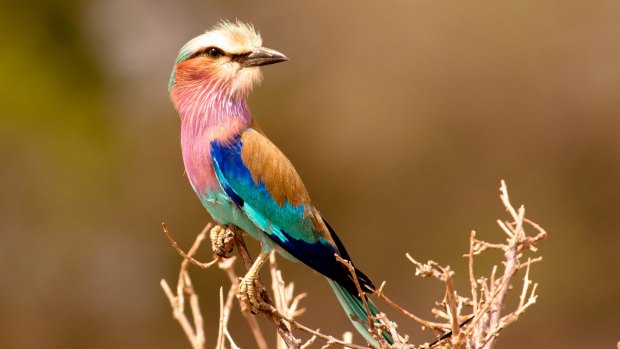
Lilac Breasted Roller posing on branch on safari.Credit: Shutterstock
Ah, the delights and disillusion of travelling with a bird-watcher, those strange people – and there are apparently 60 million of them in the US alone with their numbers growing exponentially globally – who glean inestimable joy from watching our feathered friends.
I've never taken much notice of birds before and, indeed, can barely tell a chicken from a duck, but birding is these days a multibillion-dollar tourism industry. And with 2018 declared by National Geographic to be The Year of the Bird, and in one of the world's foremost regions for bird varieties, you can't help but start to understand why. We're in Africa's least known national park, Ruaha, in the south of Tanzania, the country's biggest park which is now being cast as Africa's newest safari frontier. Covering a vast 21,000 square kilometres, it's a wild, beautiful and remote area of East Africa that has only a handful of places to stay and, up until now, few visitors. But with the World Bank now talking about investing millions into infrastructure, word is spreading about the park's extraordinary beauty, incredibly diverse landscapes, teeming wildlife – it's home to 10 per cent of the world's lion population, for instance – and, yes, no fewer than 580 recorded species of birdlife.
On one game drive, we watch a couple of hippos in the river opening their mouths wide to each other to show off their canines in a typically male battle of one-upmanship. Their rear ends are busy too: alternately peeing and pooing and scattering both far and wide with their tails to spread their scent.
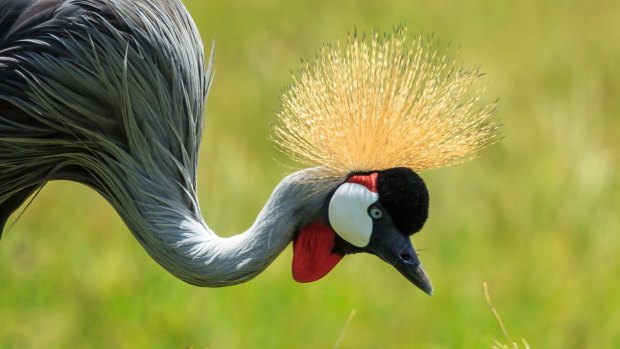
Grey-crowned crane.Credit: Shutterstock
Not far upriver, there are huge crocs sunning themselves on the banks, keeping one greedy eye on a stork who is standing just a little too close. A banded mongoose dashes past, a massive herd of elephant munch on the tall rainy season grasses, a tower of giraffe graze on treetops, a dazzle of zebra even, ironically, cross the road in front of us, and a bunch of warthog piglets gambol under the watchful eye of their mum.
Gorgeous Bambi-esque impala stand motionless in fields of lilac pretty lady flowers and white morning glory blooms as we approach, before finally bounding away elegantly, giant kudu stand grandly with their massive antlers on proud display next to huge flowering baobab trees and, between the boulders, cute hyrax, a cross between guinea pigs and possum, peek out.
On other drives, we are stopped short by two young lions lying on the muddy road in front of us, unbothered by our company, while another pride with extended bellies, having just eaten their kill, loll on the sand beside the river, again oblivious to our presence. A bigger family of elephants stomp across the water further away, with two tiny babies struggling to keep up.
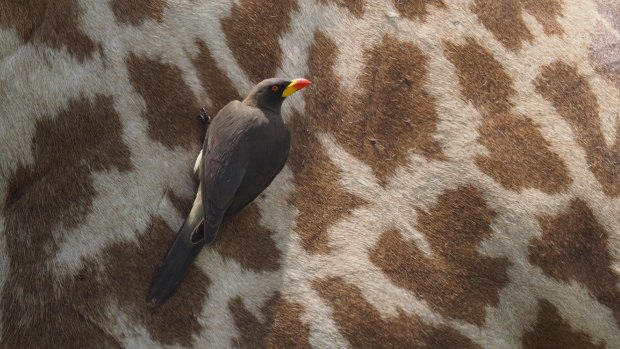
Yellow billed oxpecker feeds on parasites on a Masai Giraffe.Credit: Alamy
And a whole troupe of close to 100 yellow baboons, ranging from big daddies to tiny babies clinging to their mothers' fronts, or their fathers' backs, cross the same river, trying to jump to keep their feet dry but mostly landing with a splash and then leaping up and dancing back out.
Night drives reveal spotted hyena, white-tailed mongoose, wild cats, genets and the cutest of bat-eared foxes. But for the birders, the main thrills always lay on a wing, particularly around the mostly off-peak rainy season for visiting Africa, and, I'm embarrassed to admit, their enthusiasm is infectious.
Did you know, for example, that there's a bird, a Ruaha red-billed hornbill, which seals its female mate into a hole in a tree with mud so she can lay eggs and incubate them safely, while he feeds her through a tiny hole in her prison wall? Watching him painstakingly incarcerate his partner makes The Handmaid's Tale feel tame. Or that the lappet-faced vulture is the only one that can tear open an animal corpse to enable the other smaller varieties to come and feed? Or that the male black-faced sandgrouse, when its mate is away from the nest, soaks its feathers in water and flies back so its young can suck the moisture from its feathers? Or there is actually a bird called a drongo (four varieties, in fact)?
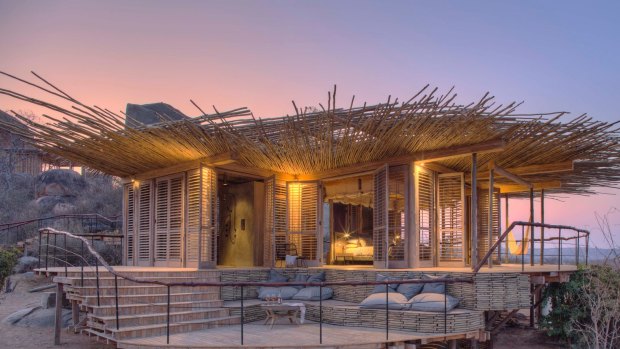
Jabali Ridge hotel Kwahali Tented Camp.
It becomes hard to ignore such amazing creatures. We watch a regular red-billed hornbill battle a scorpion to tear off its sting with his beak before he can eat it. We see a buff-breasted bustard fly up high then fall like a dead weight from the sky, as if it's been shot, to impress the ladies. And we gaze at a flock of white storks, all the way from Russia, using the warm thermals swirling up from the hot ground to get high enough into the air to hunt, because the weight of their bodies would otherwise keep them almost earthbound.
The real delight of Ruaha is that birds and beast alike have had so little exposure to humans that most are relaxed enough to hang around in your company. But while it is wild and remote, it can also be a very comfortable place to visit.
A new five-star lodge Jabali Ridge has just opened in February this year (2018), a stunning confection of wood and stone built atop a rocky outcrop of massive boulders, with sweeping views of the plains. Each of the eight suites have decks with hammocks and the communal bar and dining area command the same views, while even higher there's an infinity pool and spa.
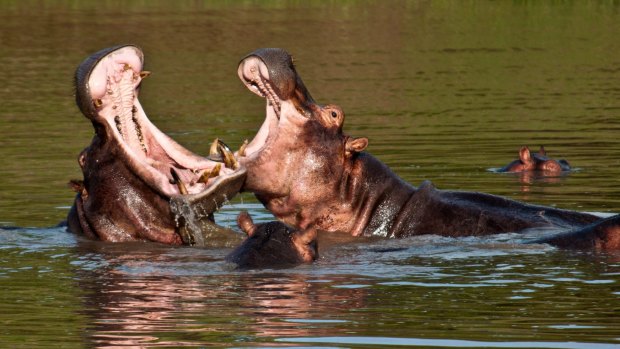
Hippo fight in the Ruaha River.Credit: Shutterstock
"Ruaha is becoming more popular all the time, and we felt it was time it had some top accommodation," says manager Clement Lawrence. "It's an extraordinary place and it merits an extraordinary place to stay. People are now discovering both the park and Jabali Ridge as so intimate and luxurious."
Alternatively, there's the four-star tented Kwihala Camp, which has six tented rooms run on solar power equipped with fabulously authentic bucket showers with water heated by wood boilers. At the centre of the camp is a spacious lounge and dining tent, with a bar and library. Dinners are either inside or on tables set up under the stars on the river bed, close to a campfire.
"Visitors love it because there are so many sightings of animals and birds, different types of vegetation and not many people here," says Kwihala manager Aidan Kikoti. "The vice president was here two weeks ago too to open a new tourist office for the area. I think it's only going to grow in popularity."
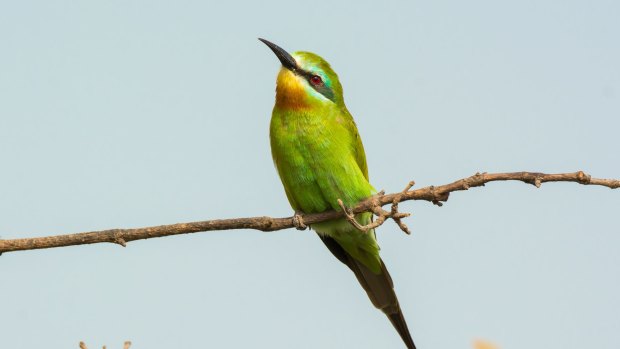
Blue-cheeked-beeeater.
While now it's easy to avoid both other vehicles and tourists, it is impossible to get away from the birdsong – or from keen birders telling you which is whose. But by the end of a stay, you may even surprise yourself. My ear catches a sudden warble. Let me see, I think that was perhaps the distinctive high-pitched chirping of the blue-cheeked bee-eater, was it not?
Sue Williams travelled courtesy of The Classic Safari Company.
THE WORLD'S 10 BEST BIRDING SPOTS
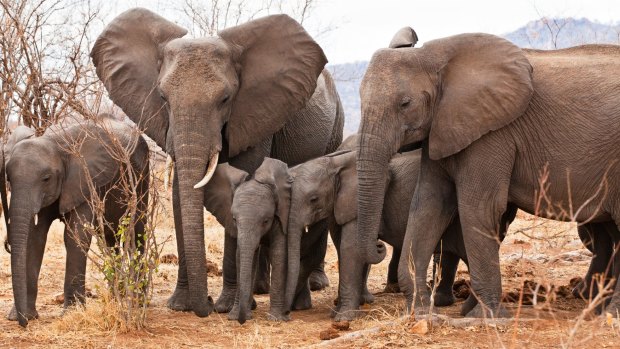
African Elephants in Ruaha National Park, Tanzania.Credit: Alamy
1. The Amazon, Brazil
2. Papua New Guinea
3. South Georgia Island
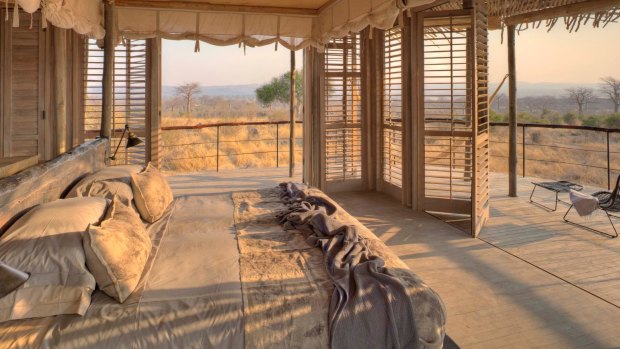
Jabali Ridge hotel Kwahali Tented Camp.
4. Ruaha National Park, Tanzania
5. Kakadu National Park, Northern Territory, Australia
6. Okavango Delta, Botswana
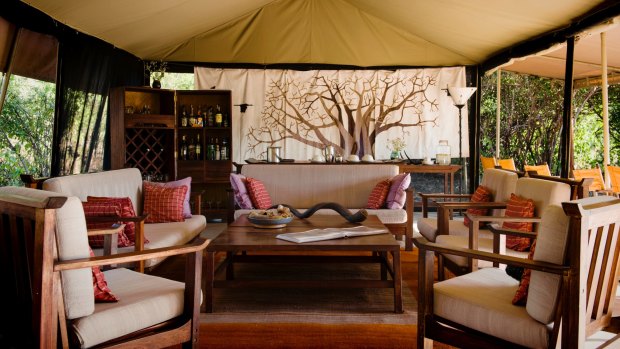
Kwihala camp lounge tent.
7. Wilson Botanical Gardens, Costa Rica
8. Galapagos Islands, Ecuador
9. Yellowstone National Park, US
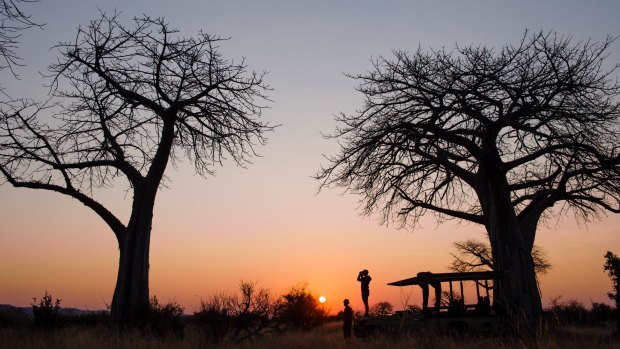
Jabali Ridge hotel Kwahali Tented Camp.
10. Otago, New Zealand
THE TOP 10 BIRDS OF EAST AFRICA
1. Secretary bird
2. Kori bustard
3. Lilac-breasted roller
4. Grand hornbill
5. Giant eagle wwl
6. Lappet-faced vulture
7. Ostrich
8. Superb starling
9. Blue-cheeked bee-eater
10. Helmeted guinea fowl
(Source: Asilia Africa)
TRIP NOTES
Qatar Airways flies to Dar es Salaam via Doha, and Emirates flies via Dubai, then there's an internal Coastal Aviation flight on a Cessna Caravan to Ruaha. See qatarairways.com, emirates.com, coastal.co.tz
STAY
Jabali Ridge – from US$788 a night. Tented camp – from US$533 a night. See asiliaafrica.com
Book via The Classic Safari Company, classicsafaricompany.com.au
Sign up for the Traveller Deals newsletter
Get exclusive travel deals delivered straight to your inbox. Sign up now.